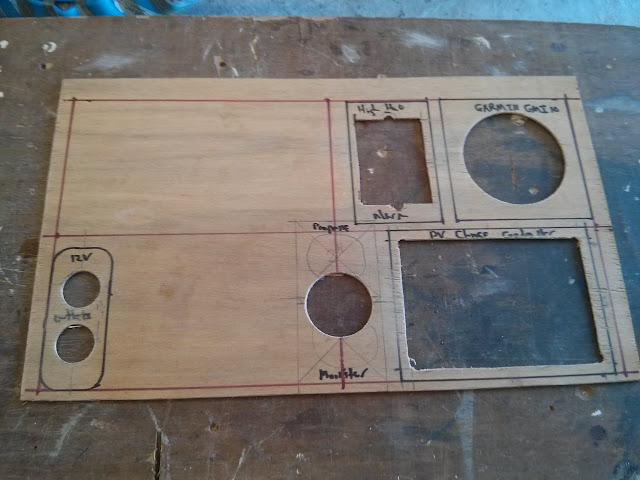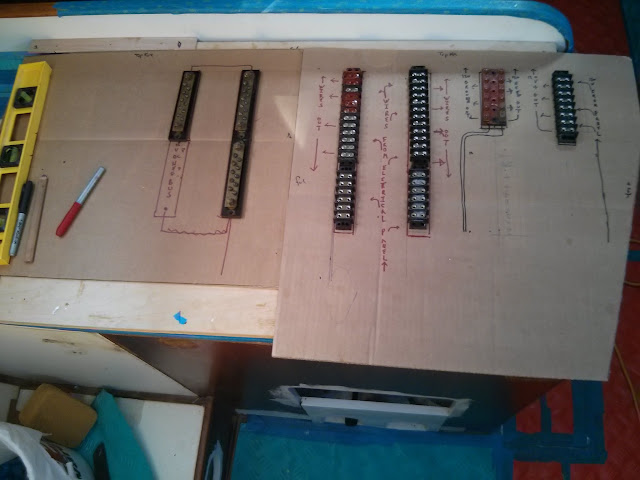Installing panels
in the frame required creative hinge work.
 |
| Test fitting new nav station electrical and instrument panels. |
To provide
the most ergonomic access to the backside of the panel we chose to hinge the
aft, electrical panel section along the forward, vertical side. Hinging the panel to swing forward provides easy
access to the panel while sitting at the nav station. It also places additional stress on the
hinge. To accommodate the additional
forces I chose to surface mount the hinge. Then thru-bolted machine screws to
attach the hinge to the panel.
The BassPanel contains 20 D/C breakers, 8 A/C breakers, an A/C reverse polarity
indicator, analogue load gauges for both D/C & A/C systems, and analogue
voltage gauges for both D/C & A/C systems.
Being uncertain
what devices may be added to the forward panel in the future, I felt the best
option was to place the hinge along the lower, horizontal edge of the
panel. Thus panel swings down and
rests atop the nav station desk. This action
provides access to the back side of the panel while sitting at the nav
station. Accessing the items mounted on
the hull outboard of the panel can be achieved by kneeling on the nav station
bench seat.
 |
| The forward, instrument panel hinges down. The aft, electrical panel hinges forward. |
I recessed
the foreword panel slightly by installing the hinge to the vertical face of the
panel and the horizontal edge of the frame.
This provides additional clearance between devices installed in the
panel and the hinged nav station desk top that swings upward when opened.
 |
| The final install will include trim along the top and an arm rest / storage below the aft section. |
Currently panel is simply slid into place for test fitting. For the final installation we will secure it
with screws and add trim along the top edge.
We also plan to build an arm rest / storage below the electrical
(aft) panel. The arm rest will hide the
wire runs entering the panel from below.
See our Navigation Station Re-Fit Photo Album for images and notes current
progress.














